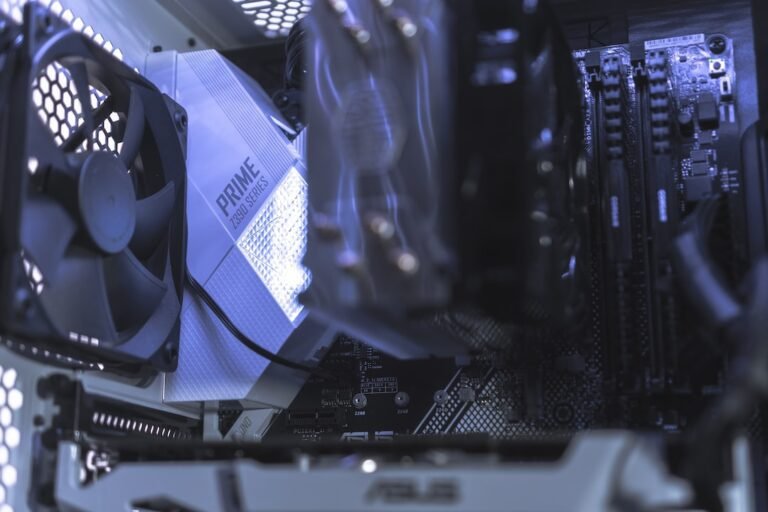Introduction
In today’s digital age, our reliance on the internet has skyrocketed. From online banking and shopping to streaming movies and connecting with friends, we constantly find ourselves connected to the world wide web. With the convenience and power that the internet brings, it’s important to remember that it can also pose risks to your privacy and security. One area in which we need to be particularly cautious is our WiFi network.
Imagine having a door into your home that anyone can easily open and access your personal belongings. That’s what an unsecured WiFi network is like � an open invitation for hackers and cybercriminals to eavesdrop on your online activities, steal your private information, and even gain control over your devices. However, by taking a few simple but effective steps, you can secure your WiFi network and protect your sensitive data.
In this article, we will explore the importance of securing your WiFi network, the risks of an unsecured network, and the steps you can take to ensure that your WiFi connection remains private and protected. So, let’s dive in and learn how to prevent unauthorized access and safeguard your data.
Risks of an Unsecured WiFi Network
Before we delve into the steps of securing your WiFi network, let’s understand the risks associated with leaving it unsecured.
Unauthorized access: An unsecured WiFi network allows anyone within range to connect to your network without your permission. This gives them access to all the devices connected to your network, potentially compromising your sensitive data.
Data snooping: Cybercriminals can easily intercept the data transmitted over an unsecured WiFi network. This means that your private messages, passwords, financial information, and other sensitive data are at risk of being intercepted and misused.
Malware attacks: Malicious software can easily find its way onto your devices via an unsecured WiFi network. Once inside your system, malware can wreak havoc and compromise your data, steal your identity, or even take control over your devices.
Identity theft: Cybercriminals can use your unsecured network to collect your personal information and use it to impersonate you or carry out fraudulent activities. They can gain access to your email accounts, social media profiles, and even your financial accounts, leading to identity theft and financial loss.
Botnet recruitment: Unsecured networks can become breeding grounds for cybercriminals to recruit devices into a botnet. Botnets are networks of compromised devices that hackers control and use to carry out large-scale cyber attacks, such as DDoS attacks, ransomware distribution, or spam campaigns.
Now that we understand the risks, let’s move on to the steps you can take to secure your WiFi network.
Secure Your WiFi Network: Best Practices
Securing your WiFi network doesn’t have to be a complex, technical process. By following these best practices, you can significantly increase your network’s security and protect your data from unauthorized access:
1. Change the Default Network Name (SSID) and Password
Every router comes with a default Network Name (SSID) and password, such as “admin” or “password”. The first step to securing your WiFi network is to change these default credentials. Choose a unique, secure network name that doesn’t reveal any personal information, and create a strong password that combines upper and lowercase letters, numbers, and special characters.
2. Enable Encryption
Encryption is a crucial security measure that scrambles the data transmitted between your devices and the router, making it unreadable to unauthorized users. Always make sure to enable the strongest encryption protocol available, such as WPA2 (Wi-Fi Protected Access 2) or WPA3 (Wi-Fi Protected Access 3), on your router. Avoid using outdated and less secure encryption protocols like WEP (Wired Equivalent Privacy).
3. Use a Firewall
Most routers come with built-in firewalls that act as a barrier between your network and the internet, blocking unauthorized access and potential attacks. Ensure that your router’s firewall is enabled, and consider investing in a hardware firewall for an extra layer of protection.
4. Disable Remote Management
Remote management allows you to access and configure your router’s settings from anywhere. However, it also exposes your router to potential risks. It’s advisable to disable remote management unless you absolutely need it. Doing so will prevent remote attackers from tampering with your router’s settings.
5. Update Router Firmware Regularly
Router manufacturers release firmware updates to fix security vulnerabilities and improve performance. Make it a habit to check for and install these updates regularly. Keeping your router’s firmware up to date ensures that you have the latest security patches and safeguards against newly discovered vulnerabilities.
6. Disable WPS (Wi-Fi Protected Setup)
While WPS offers convenience in connecting devices to your WiFi network, it also poses a significant security risk. Hackers can exploit the WPS feature to gain access to your network. Disable WPS in your router settings to eliminate this potential vulnerability.
7. Create Guest Network
If you frequently have visitors or share your WiFi network with others, consider setting up a separate guest network. A guest network allows your visitors to connect to the internet without accessing your primary network. This helps isolate your devices and data from potential threats posed by guests’ devices.
8. Use Strong and Unique Passwords for Network Devices
In addition to securing your WiFi network with a strong password, it’s crucial to do the same for all your network devices. Change the default login credentials of your router, modem, and any other network devices you use, ensuring that each password is strong and unique.
9. Disable DHCP for Unused Devices
If you have devices that are no longer in use or connected to your WiFi network, disable DHCP (Dynamic Host Configuration Protocol) for those devices. This prevents them from automatically obtaining network resources and reduces the potential exposure of your network.
10. Regularly Monitor Network Devices and Activity
Keep an eye on the devices connected to your network and be vigilant for any unusual behavior. Most modern routers offer features to monitor connected devices and track their activity. By regularly checking these logs, you can quickly identify any suspicious devices or activity and take appropriate action.
Conclusion
Securing your WiFi network is essential to protect your data and maintain your online privacy. By following the best practices we discussed, you can prevent unauthorized access, reduce the risks of data breaches and cyber attacks, and ensure a safe and secure online experience for yourself and your family. Remember, it’s crucial to stay informed about the latest threats and security measures and regularly update your network devices to stay one step ahead of cybercriminals. Take control of your WiFi network security today and keep your data safe from prying eyes.




